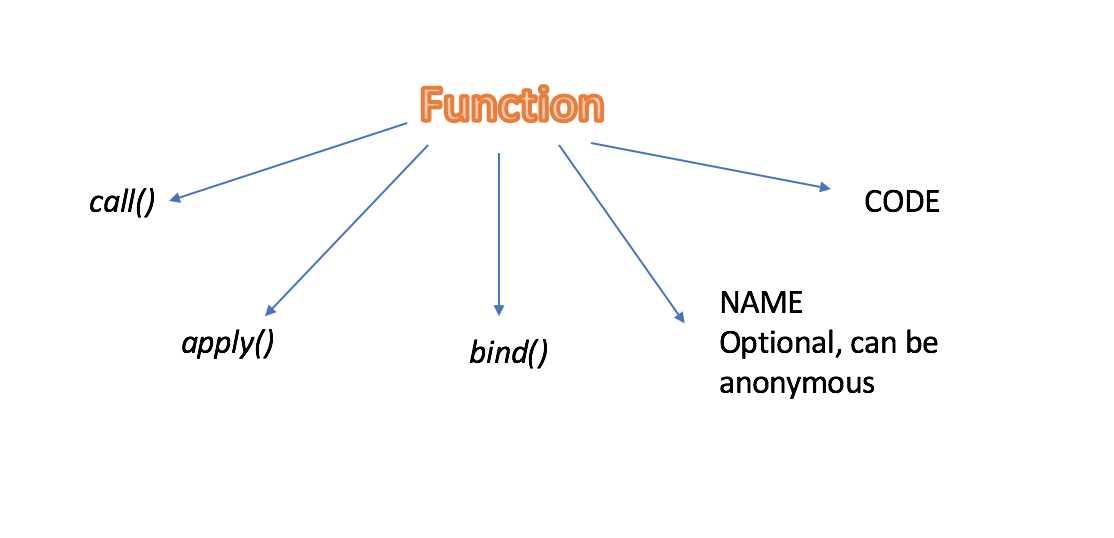Javascript: call(), apply() and bind()
2/4/2020

this 是上下文执行环境(execution context)的一个属性。函数调用时,会自动与特定的对象绑定。
函数对象:

if(this.isEmpty()) {
var deleteBtn = document.createElement("button");
deleteBtn.innerHTML = "Empty Cart";
deleteBtn.className = "delete";
var myCart = this;
// when calling method on deleteBtn, 'this' becomes deleteBtn and we lose the context of myCart
// this is why we save a reference to myCart as 'this'
deleteBtn.addEventListener("click", function() {
myCart.clearCart();
});
cartDOM.appendChild(deleteBtn);
}
有时候我们需要保存this, 因为deleteBtn.addEventListener中this指向的是deleteBtn对象.使用call()、apply()、bind()可以解决这个问题。
bind()
bind() 方法会创建一个新函数。当这个新函数被调用时,bind() 的第一个参数将作为它运行时的 this,之后的一序列参数将会在传递的实参前传入作为它的参数。
var pokemon = {
firstname: 'Pika',
lastname: 'Chu ',
getPokeName: function() {
var fullname = this.firstname + ' ' + this.lastname;
return fullname;
}
};
var pokemonName = function(snack, hobby) {
console.log(this.getPokeName() + 'I choose you!');
console.log(this.getPokeName() + ' loves ' + snack + ' and ' + hobby);
};
var logPokemon = pokemonName.bind(pokemon); // creates new object and binds pokemon. 'this' of pokemon === pokemon now
logPokemon('sushi', 'algorithms'); // Pika Chu loves sushi and algorithms
call()、apply()
call()、apply() 方法在使用一个指定的 this 值和若干个指定的参数值的前提下调用某个函数或方法。两者唯一的不同在于传参的形式不一样。 可以参考下面的例子。
var pokemon = {
firstname: 'Pika',
lastname: 'Chu ',
getPokeName: function() {
var fullname = this.firstname + ' ' + this.lastname;
return fullname;
}
};
var pokemonName = function(snack, hobby) {
console.log(this.getPokeName() + ' loves ' + snack + ' and ' + hobby);
};
pokemonName.call(pokemon,'sushi', 'algorithms'); // Pika Chu loves sushi and algorithms
pokemonName.apply(pokemon,['sushi', 'algorithms']); // Pika Chu loves sushi and algorithms